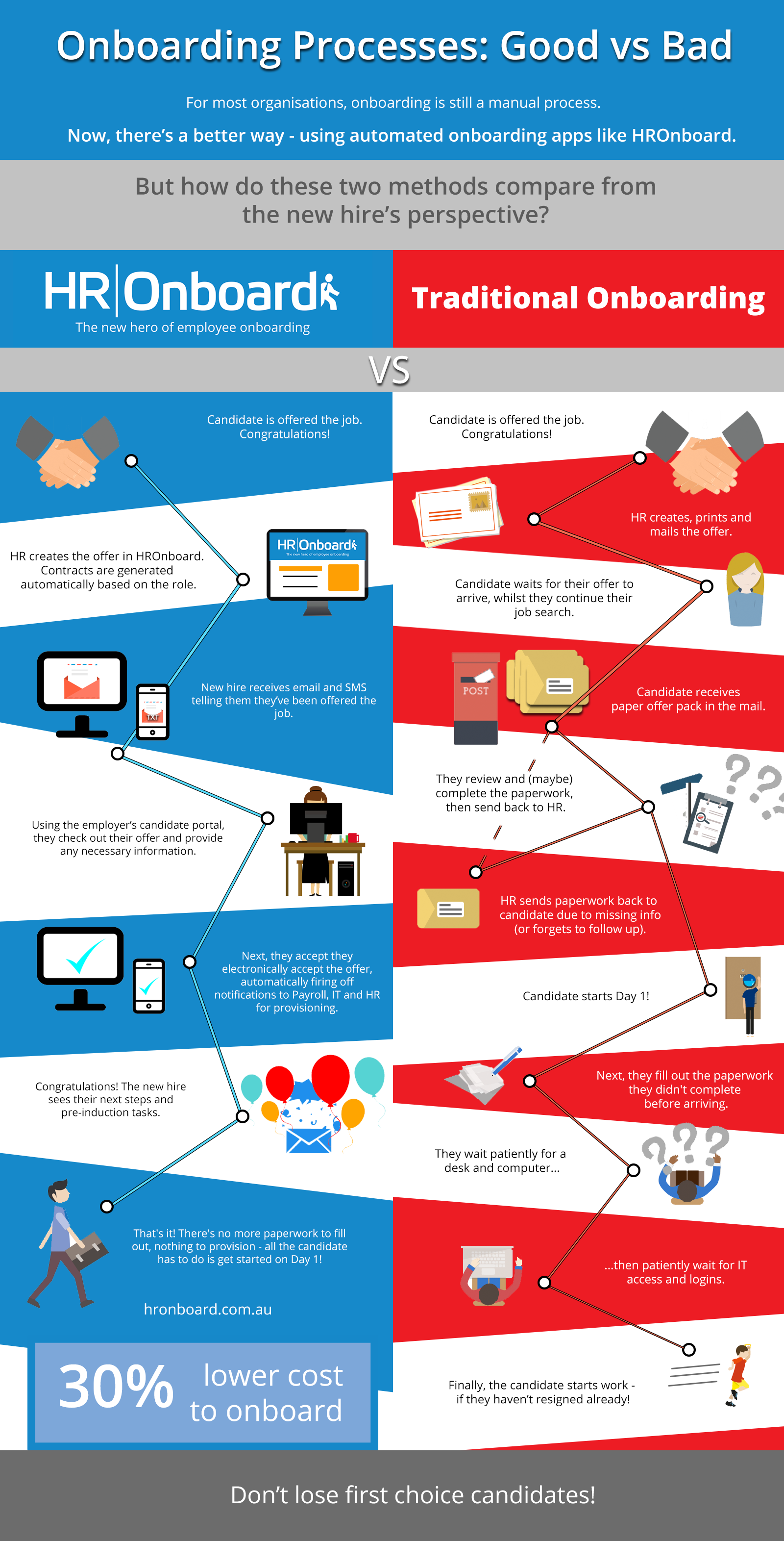
The training phase is one of the most important phases of onboarding, and it's directly correlated with how successful new employees will be at their jobs. During the end of the second phase, you can organize a quick meeting with your new hires to make sure they are comfortable and adjusting well. After this, introduce your new hires to their teammates and other stakeholders. If necessary, direct them to parking spots, cafeterias, and medical facilities. Discuss topics like time off, attendance, medical insurance, and payroll policies. During orientation, help them gain a better grasp of your organizational culture, and show them how your work practices are aligned with this culture.

Keep the first day as simple as possible. Most new hires will be eager to get started, though, so it's better to restrict this phase to less than a week. That's why it's necessary to give them a clear picture of your organization before they begin their work. Keep in mind that they may not know anyone inside your organization yet, and they won't know how teams operate on a day-to-day basis. The second phase of onboarding is often dedicated to welcoming new hires to your organization and providing an orientation to help new hires acclimate. You could also send them a video or document that gives a brief idea about how your organization works and what their first day will look like. If they are relocating, check if they need any help finding a place to live. Make sure to give them ample time as they may be finishing up with exit tasks at their previous organization. On the other hand, when candidates are managed properly and kept updated on organizational developments, they'll start feeling more excited about their decision to join your organization.ĭuring the pre-onboarding phase, help employees complete all the necessary paperwork. Even a small miscommunication or misunderstanding can make candidates doubt their decision to join your organization. This is a very crucial time for your candidates because they are the most uncertain of what lies ahead. The first phase of onboarding, also called pre-onboarding, begins as soon as a candidate accepts your offer and continues until their first day of joining. If your organization is new to onboarding or if you're looking to improve this area of your HR process, understanding the different onboarding phases will help you draft a clear strategy to engage candidates, improve new hire retention, and help employees adapt to your organizational practices. This is your first impression and your chance to lay the groundwork for the rest of your new hire's experience with your organization. By the time onboarding is finished, your new employee should have an in-depth understanding of the organization's culture and values. Optimizing the onboarding process is one key strategy for improving your employer brand and recruiting better candidates. In today's candidate-driven market where the competition for talent is increasing steadily, organizations need to go above and beyond to attract quality employees.


 0 kommentar(er)
0 kommentar(er)
